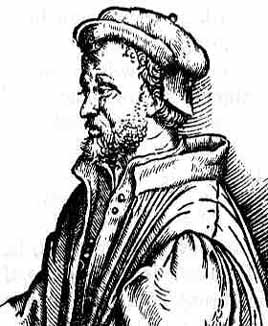 |
| Gerolamo Cardano, a pioneer of probability theory (Photo credit: Wikipedia) |
Negative numbers have been the source of wide controversy in the historical development of mathematics. Even as late as the 18th century, some mathematicians argued that equations with negative solutions suggested that a false assumption had been made. The fact that negative numbers could not represent physical quantities was the main reason people were reluctant to accept negative numbers. The Greeks, for example, studied geometry where numbers were used to represent length and distance. The Greeks understood that formulas might involve negative quantities, but since geometric measurements were always positive, equations that yielded negative numbers were considered "absurd."
The Chinese are credited with being the first known culture to recognize and use negative numbers. The book Nine Chapters on the Mathematical Art, written around the year 200 AD, documents some of the development of mathematics in ancient China. Chapter 8 of this book describes how red rods are used to represent positive numbers and black rods are used to represent negative numbers. Later, Chinese mathematician Liu Hui wrote negative numbers in a slanted position to set them apart from positive numbers. Subsequent Chinese works, such as the 1299 book Introduction to Mathematical Studies, fully document the rules for performing mathematical operations on positive and negative numbers.
The Indian mathematician Brahmagupta is known to have used negative numbers starting around 630 AD. During this time, positive numbers were used to represent assets and negative numbers were used to represent debt. Brahmagupta described the rules for the four basic operations on signed numbers-addition, subtraction, multiplication and division. He also pointed out that the square root of a positive number could be positive or negative. Brahmagupta is credited with other important mathematical contributions to the areas of arithmetic, algebra and geometry. For example, Brahmagupta's treatment of quadratic equations and the quadratic formula, which can result in negative and irrational solutions, is of particular importance.
The first evidence of the acceptance of negative numbers in Europe can be traced back to the year 1545. In this year, Italian mathematician Girolamo Cardano wrote a book titled The Great Art. Like Brahmagupta, Cardano clearly stated the rules for the use of negative numbers. Despite his understanding of computation and calculations with negative numbers, Cardano was reluctant to give negative numbers practical acceptance. In fact, he called negative solutions "fictitious" whereas positive solutions were deemed "true." French mathematician Rene Descartes held a similar view to Cardano. He even described methods to transform negative solutions to those that were positive. In 1759, English mathematician Baron Francis Maseres went so far as to publish a work describing how negative numbers could be avoided. These mathematicians fully understood the rules ofnegative numbers but perhaps not their application to real-life.
By the late 1700's, the algebraic use of negative numbers had become widely accepted.
No comments:
Post a Comment